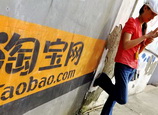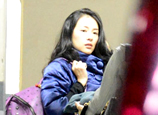
For 100 years, a unique and open culture of TCM flourished in Shanghai, welcoming and adapting schools from around the country, as well as western medicine. Doctors even shared once jealously guarded family prescriptions, reports Tan Weiyun.
Like Shanghai itself and its cosmopolitan haipai (Shanghai style), the traditional Chinese medicine that took root and flourished in the city for around 100 years is notable for its practitioners' open mind and their willingness to embrace, adapt to many styles of both TCM and Western medicine.
To recognize the city's unique TCM heritage, the municipal government has a two- to three-year plan to renovate and reopen 15 historic sites, such as the residences of masters, old pharmacies and compounding workshops. The aim is to promote Shanghai's special, eclectic healing traditions.
"Shanghai TCM is unique in combining not only a wide variety of medical styles from around China but also opening its doors to Western medicine since the middle of 19th century," says Yan Shiyun, a TCM master and professor at Shanghai University of TCM. "Tolerance, absorption and mixture are the key words of haipai TCM."
With the opening of the Shanghai port in the mid-1800s, the city known as the "Paris of the Orient" and center of the nation's economy and culture, also attracted TCM practitioners from all parts of the country.
It featured acupuncture therapies from Jiangsu and Anhui provinces, massage from Shandong Province, pediatrics from Ningbo in Zhejiang Province and internal medicine from Chengdu in Sichuan Province, among many others.
In 1927, famous acupuncturist Lu Shouyan (1909-1969) from Kunshan, Jiangsu Province, opened his acupuncture clinic in Shanghai.
At the time many critics who were not familiar with TCM, considered the ancient practice to be witchcraft, and so it was dying out.
Lu started writing a newspaper column to explain the principles behind acupuncture, compiled medical books with his wife Zhu Rugong, and wrote many articles on how to cure disease and ailments with acupuncture.
In 1916, Zhu Nanshan (1871-1938) started to practice in Shanghai, the TCM he studied in Jiangsu. An expert in gynecology, Zhu was skilled in treating menstrual problems, such as pain, as well as infertility, and habitual miscarriage. His reputation spread and he treated around 200 patients a day.
"A striking feature of Shanghai-style TCM is that doctors respected and learned from each other," Yan says.
Gynecologists Cai Xiangyun and He Hongfang exchanged views and shared experience; pediatrician Xu Xiaopu learned from Zhu Weiju and even sent his son to study from Zhu. Ding Ganren took Wang Shilian and Tang Rongchuan as his teachers.
"Many TCM doctors coming to Shanghai at that time were very open-minded and pioneering," says Dr Shang Li, director of the Shanghai TCM International Trade in Service Promotion Center. It's a government-backed organization that promotes the TCM industry to the Western world.
In 1916, Ding Ganren, a TCM master from Menghe, Jiangsu Province, set up China's first TCM educational institution, which broke with the centuries-old tradition of keeping TCM in the family and not sharing its "secrets" and prescriptions with outsiders.
He was also believed to be the first TCM practitioner in China who introduced Western medicine to his students, including anatomy, physiology, pathology and other fields.
With his efforts, more than 40 TCM schools were founded during the early 1920s. Almost 80 percent of the famous modern TCM doctors in China today graduated from these schools.
Jiangsu-native Lu Yuanlei (1894-1955) was dedicated to combining ancient Chinese therapy with Western medicine. The master, fluent in English, German, French and Japanese, introduced many Western medical works to China.
 |
















![]()
